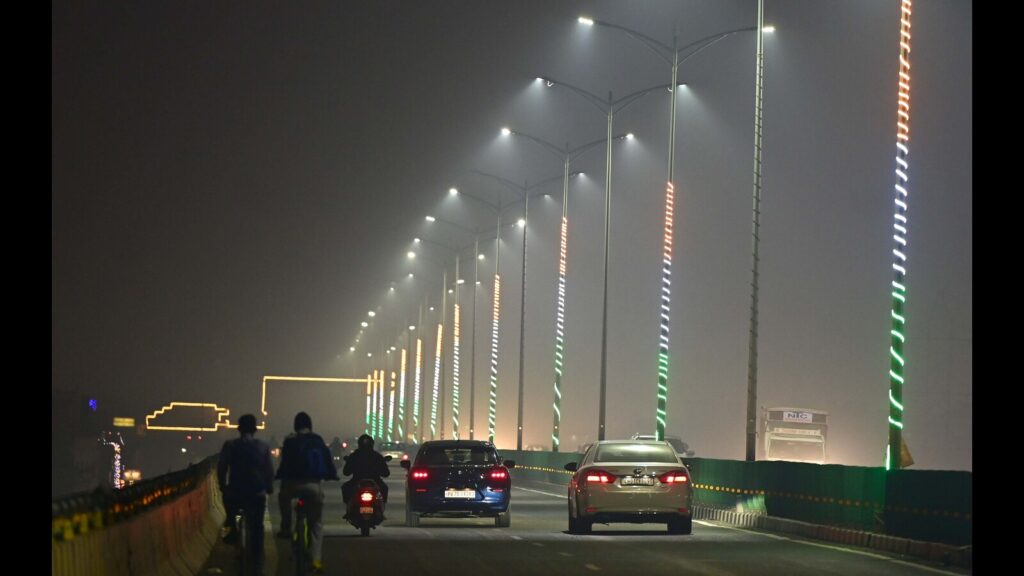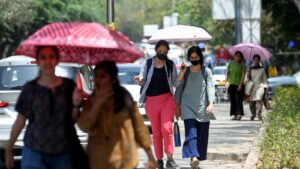No respite for Chandigarh as AQI remains ‘very poor’ for second day

The city’s Air Quality Index (AQI) remained in the very poor category (301-400) for the second consecutive day on Saturday as bursting of crackers continued on Friday night.

However, there was a slight improvement in air quality during the day and is expected to get better in the coming days due to the prevailing weather conditions.
With residents continuing to burst crackers a day after Diwali, AQI remained in the very poor bracket till Saturday morning.
An AQI of 306 was recorded at the Continuous Ambient Air Quality Monitoring Station (CAAQMS) in Sector 22 at midnight.
Around 6 am the next morning, it entered into the very poor bracket at the Sector 53 observatory as well, going up to 302. However, the pollution levels started falling by the afternoon, bringing AQI into the poor bracket by 12 pm.
How is AQI calculated
As per the Central Pollution Control Board (CPCB), AQI is defined as an overall scheme that transforms weighted values of individual air pollution related parameters like SO2, CO and visibility into a single number or set of numbers.
AQI at the continuous monitoring stations set up by the CPCB is calculated by calculating the sub-indices for individual pollutants at a location using its 24-hourly average concentration value (8-hourly in case of CO and O3) and health breakpoint concentration range. The worst sub-index is the AQI for that location.
CPCB further releases a daily bulletin by taking the average of all observatories of a particular city at 4 pm.
On Saturday, Chandigarh’s AQI was 277 as the air quality improved later during the day. Delhi was at 316, Amritsar at 368 and Ludhiana at 339, as per this bulletin.
Speaking about the reasons behind the prevailing pollution, officials said crackers burst for the second consecutive day on Friday kept the air quality from improving after Diwali night.
Member secretary of Chandigarh Pollution Control Committee, TC Nautiyal said as even green crackers lead to pollution, efforts were made to reach out to people not to burst crackers. However, on Friday night, even as PCR vehicles were seen patrolling the streets, they were mostly ignored and crackers were burst into the night.
Winds help clean pollutants in air
North-westerly winds blowing in the city helped scatter pollutants from the air, as per India Meteorological Department (IMD) Chandigarh director Surender Paul. The winds, which are blowing between 10-15 km/h, are characteristic of winter’s arrival. Dry and cool in nature, they help disperse pollutants in the air.
Further, the high temperature during the day is also helping keep AQI from rising, as cooler temperatures lead to temperature inversion, which causes the concentration of pollutants to rise in the city’s air.
High temperature to the rescue
Ever since the month started, on November 1, the maximum temperature was 32.6°C, further rising to 32.9°C on November 2.
This is highest for the month of November in the past 10 years for which data is readily available. It is also close to the all-time highest for November, which was 34°C on November 1 in 1970. As per Paul, because of this, AQI has been reducing during the day as compared to the night time.
However, with temperature set to fall later during the month, AQI is likely to rise further, especially if stubble burning goes unchecked in adjoining areas of Punjab and Haryana, as per Nautiyal.
Cracker ban flouted: 4 FIRs lodged
Meanwhile, police booked four people for bursting crackers beyond the 8pm-to-10 pm time limit on Diwali night, as imposed by the Chandigarh administration.
In the first case, a complaint by Vijay Kumar, a resident of Sector 26, led to an FIR against Nikhil, Arjun, Raj and others, who were bursting crackers near his home on October 31. When Kumar attempted to intervene, the accused allegedly attacked him with a rod.
Three additional cases were filed across Chandigarh against unknown individuals. In Sector 9, an unidentified person was seen bursting crackers near Boom Box on Friday. In Sector 24, a similar violation occurred near Ganesh Market. In Sector 22, two individuals were spotted bursting crackers near Dispensary Chowk.




